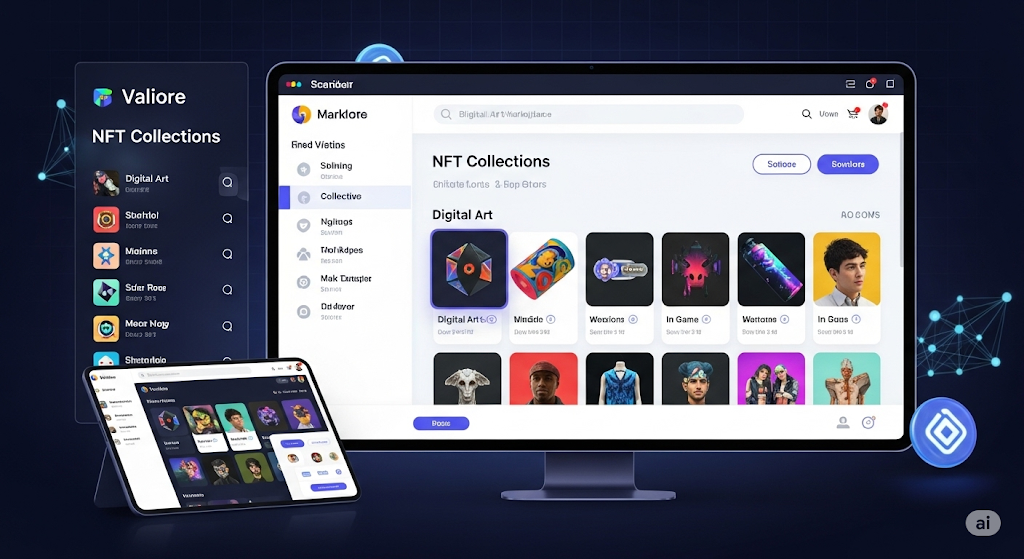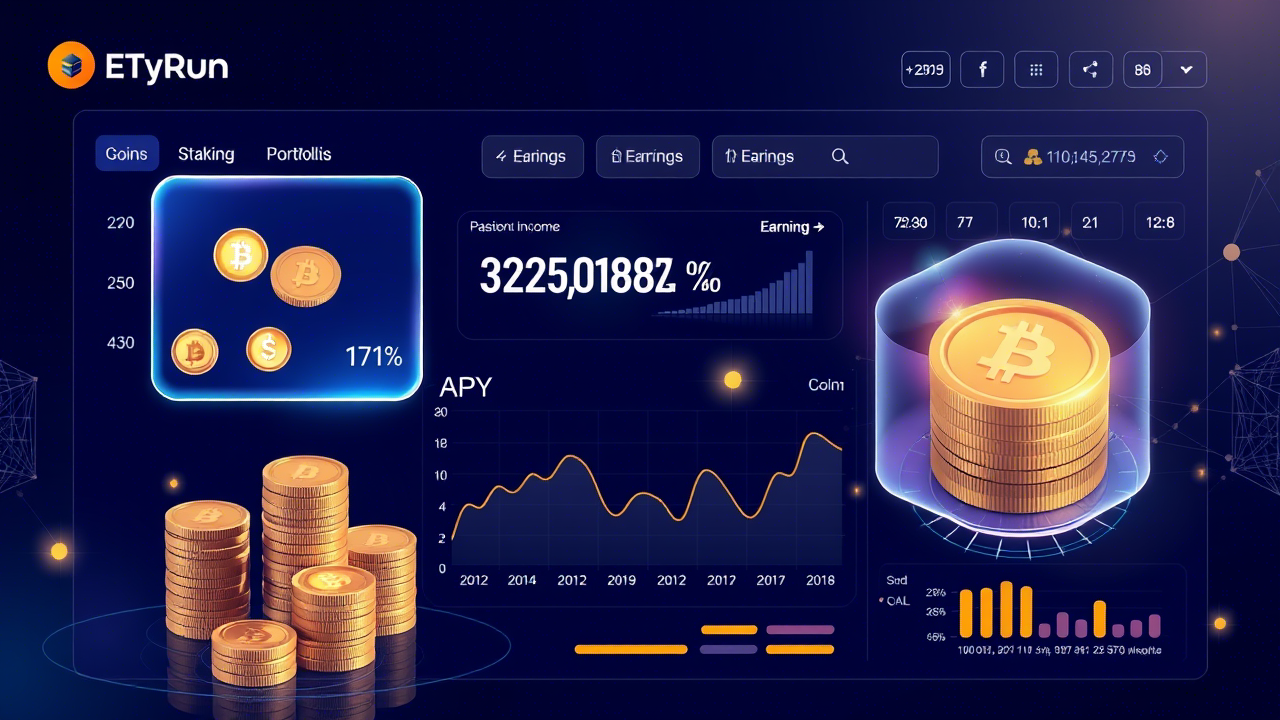The cryptocurrency landscape continues to evolve at breakneck speed, with new cryptocurrency projects launching almost daily. As an investor who has navigated multiple market cycles since 2017, I’ve witnessed countless project launches, from revolutionary breakthroughs to complete failures. The key lies in identifying genuine opportunities among the noise.
New cryptocurrency projects represent some of the most exciting yet risky investment opportunities in the digital asset space. While established coins provide stability, emerging projects offer the potential for exponential returns. However, this potential comes with significant risks that every investor must understand before diving in, especially when considering crypto investment for beginners.
The current market environment presents unique opportunities for early investors willing to research thoroughly and invest responsibly. With institutional adoption growing and regulatory clarity improving globally, many new projects are launching with stronger fundamentals than their predecessors from previous cycles.
What Are the Newest Cryptocurrencies
The newest cryptocurrencies entering the market span various categories, from layer-one blockchains to specialized DeFi protocols. Recent months have seen launches in artificial intelligence integration, real-world asset tokenization, and sustainable blockchain solutions.
Major project categories currently emerging include zero-knowledge proof implementations, cross-chain interoperability solutions, and gaming-focused cryptocurrencies. These projects address specific market gaps that earlier generations of cryptocurrencies couldn’t solve effectively, building upon the foundational concepts explained in our guide to what is blockchain technology.
Many new projects now launch with established partnerships, experienced development teams, and clear use cases. This represents a significant evolution from the speculative projects that dominated earlier market cycles. According to Wikipedia’s cryptocurrency overview, the industry has matured significantly since Bitcoin’s inception, with investors now focusing on projects with transparent development roadmaps and practical applications.
The venture capital funding flowing into new cryptocurrency projects has reached unprecedented levels. Top-tier funds are backing projects with strong technical foundations and experienced teams, providing a quality filter for potential investors to consider.
New Cryptocurrency Today
Today’s new cryptocurrency launches often follow more structured processes than previous years. Most legitimate projects now conduct private funding rounds, public sales, and exchange listings through established procedures that provide better investor protection.
Current market conditions favor projects solving real-world problems rather than purely speculative tokens. Healthcare data management, supply chain tracking, and carbon credit trading represent growing sectors attracting serious development teams and investor interest.
The regulatory environment has influenced how new projects structure their tokens and conduct fundraising. This has led to more compliant launches but also potentially stronger long-term prospects for projects that navigate these requirements successfully.
Social media and crypto communities provide real-time updates on new launches, but investors must distinguish between legitimate projects and marketing hype. Established crypto news platforms, developer activity on GitHub, and partnership announcements serve as better indicators of project legitimacy.
New Cryptocurrency List
Maintaining awareness of new cryptocurrency projects requires monitoring multiple sources. Exchange listings, venture capital announcements, and blockchain development activity provide the best indicators of upcoming opportunities.
Layer-one blockchain projects continue attracting significant attention, with new consensus mechanisms and scalability solutions launching regularly. These projects often generate substantial interest due to their potential to challenge established networks like Ethereum and Solana.
DeFi protocols represent another active category, with new lending platforms, decentralized exchanges, and yield farming opportunities emerging frequently. These projects often build on existing blockchain infrastructure while providing novel financial services.
Gaming and metaverse projects have maintained strong momentum, with new play-to-earn economies and virtual world platforms launching regularly. The integration of NFTs and traditional gaming mechanics continues driving innovation in this sector.
Infrastructure projects focusing on developer tools, oracles, and cross-chain bridges provide essential services to the broader ecosystem. While these projects may seem less exciting than consumer-facing applications, they often provide more stable long-term value propositions.
New Cryptocurrency to Invest In
Selecting new cryptocurrency investments requires balancing potential returns against significant risks. Successful early-stage investing demands thorough research into team backgrounds, technical architecture, and market positioning. Understanding crypto trading strategies that actually work becomes crucial when timing entry and exit points for new projects.
Projects with clear utility beyond speculation tend to perform better long-term. Whether providing infrastructure services, solving specific industry problems, or enabling new forms of digital interaction, utility-focused projects demonstrate stronger resilience during market downturns.
Team experience and track record serve as crucial evaluation criteria. Projects led by developers with successful previous launches or significant experience at established crypto companies typically execute better than those with inexperienced teams.
Community engagement and developer activity provide ongoing indicators of project health. Active GitHub repositories, regular development updates, and growing user bases suggest projects maintaining momentum beyond initial launch hype.
Partnership announcements with established companies or other blockchain projects can validate new cryptocurrency projects. However, investors should verify these partnerships and understand their practical implications rather than accepting marketing claims at face value.
Which Coin Will Boom in 2025
Predicting which specific coins will experience significant growth requires analyzing multiple factors including technological innovation, market adoption, and macroeconomic conditions. Historical patterns suggest that coins solving genuine problems with strong execution tend to outperform purely speculative tokens.
Artificial intelligence integration with blockchain technology represents a major trend that could drive significant growth in related projects. As AI tools become more mainstream, cryptocurrencies enabling AI-powered services or providing computational resources for AI development may see increased demand.
Environmental sustainability continues influencing investor sentiment and regulatory decisions. Projects demonstrating genuine environmental benefits or carbon-neutral operations may attract institutional investment as ESG considerations become more important in crypto investing.
Interoperability solutions connecting different blockchain networks address a fundamental challenge in the current ecosystem. Projects enabling seamless asset transfers and communication between chains could capture significant value as the multi-chain future develops.
Real-world asset tokenization represents an enormous market opportunity that remains largely untapped. Projects successfully bridging traditional finance with blockchain technology through property, commodity, or securities tokenization could experience substantial growth.
Which Coin Is Next Bitcoin
Comparing new cryptocurrencies to Bitcoin involves understanding what made Bitcoin successful and identifying similar characteristics in emerging projects. Bitcoin’s success stemmed from first-mover advantage, network effects, limited supply, and gradual institutional adoption.
New projects claiming to be the “next Bitcoin” typically misunderstand Bitcoin’s unique position as digital gold and store of value. Rather than direct Bitcoin competitors, successful new projects generally serve different market needs or provide complementary functionality.
Store of value characteristics require decades to develop and depend on market perception, regulatory acceptance, and network security. New cryptocurrencies can’t simply declare themselves digital gold and expect immediate acceptance as store of value assets.
Innovation in programmability, scalability, or specific use cases may create significant value without directly competing with Bitcoin’s store of value proposition. Projects focusing on their unique strengths rather than Bitcoin comparisons typically achieve better market positioning.
The “next Bitcoin” mindset often leads to poor investment decisions. Instead of seeking direct Bitcoin replacements, investors should evaluate new projects based on their individual merits and specific value propositions within the broader crypto ecosystem.
New Crypto Coins
New crypto coins launching today typically feature more sophisticated tokenomics than earlier projects. Deflationary mechanisms, staking rewards, and utility-based token distribution have become standard features in well-designed projects.
Layer-two solutions and sidechains continue producing new tokens as scaling solutions for established blockchains. These projects often provide faster transactions and lower fees while maintaining security through their parent blockchain networks.
Meme coins and community-driven projects maintain popularity despite their speculative nature. While most fail to maintain long-term value, some develop genuine utility and strong communities that sustain their growth beyond initial hype.
Geographic-specific projects targeting particular regions or regulatory environments represent an interesting development. These projects often focus on local compliance requirements and specific market needs that global projects might overlook.
Cross-chain tokens designed to operate across multiple blockchain networks represent technical innovation in token design. These projects address fragmentation in the crypto ecosystem by providing unified experiences across different blockchain platforms.
Upcoming Crypto Coins
Upcoming crypto coin launches often generate significant anticipation, but investors should focus on fundamental analysis rather than launch hype. Pre-launch marketing campaigns don’t guarantee post-launch success or sustainable value creation.
Venture capital backing provides one indicator of upcoming project quality. Projects receiving funding from established crypto VCs typically undergo more rigorous due diligence than those relying solely on community funding.
Testnet activity and developer engagement offer insights into upcoming projects’ technical readiness. Projects with active testing phases and developer communities often execute smoother mainnet launches than those rushing to market.
Regulatory compliance preparation has become increasingly important for upcoming launches. Projects working with legal teams to ensure compliance in major markets typically face fewer post-launch challenges than those ignoring regulatory requirements.
Strategic partnerships announced before launch can provide competitive advantages and market access. However, investors should verify partnership details and understand how they contribute to project success rather than accepting partnership announcements as automatic endorsements.
Latest Crypto Projects
Latest crypto projects increasingly focus on solving specific industry problems rather than creating general-purpose platforms. This specialization often leads to stronger value propositions and clearer paths to adoption.
Healthcare, supply chain, and identity management represent sectors attracting serious blockchain development efforts. These projects typically require longer development timelines but may provide more sustainable business models than purely financial applications.
Integration with traditional finance continues driving new project development. Payment processing, lending, and asset management projects that bridge crypto and traditional finance often attract both retail and institutional interest.
Privacy-focused projects maintain relevance as data protection concerns grow globally. New approaches to private transactions and data security may find significant markets as privacy awareness increases among crypto users.
Developer infrastructure projects may seem less exciting than consumer applications but often provide essential services that enable broader ecosystem growth. These projects frequently achieve steady growth through usage-based revenue models.
Emerging Altcoins
Emerging altcoins today benefit from more mature development practices and funding sources than earlier generations. This improved foundation increases the likelihood of successful long-term execution for well-chosen projects.
Sector rotation within crypto markets means different altcoin categories gain favor at different times. Gaming tokens, DeFi protocols, and infrastructure projects experience varying levels of investor interest throughout market cycles.
Market capitalization and trading volume provide important context for evaluating emerging altcoins. Projects with genuine utility typically demonstrate growing transaction volumes and user adoption metrics beyond speculative trading activity.
Technology differentiation helps emerging altcoins stand out in an increasingly crowded market. Projects offering unique technical features or novel approaches to common problems often attract more sustained interest than copycat projects.
Long-term thinking when evaluating emerging altcoins helps filter short-term hype from genuine innovation. Projects building for multi-year adoption cycles often provide better risk-adjusted returns than those focusing on immediate speculative gains.
How to Buy New Crypto Before Listing
Buying new cryptocurrency before exchange listings typically involves participating in private sales, public fundraising rounds, or decentralized exchange launches. Each method carries different risks and requirements that investors must understand.
Private sales usually require significant minimum investments and connections within the crypto industry. Accredited investor status may be necessary for participation in these early funding rounds, which often offer the lowest token prices but longest lockup periods.
Public fundraising through initial DEX offerings or initial coin offerings provides broader access but still requires technical knowledge. Investors must understand smart contract interactions and be prepared for high transaction fees during popular launches. For those new to this process, our comprehensive guide on how to buy Bitcoin provides foundational knowledge applicable to purchasing new cryptocurrencies.
Decentralized exchange listings often occur before centralized exchange listings, providing early access opportunities for technical users. However, low liquidity and high slippage can make these early purchases expensive and risky.
Due diligence becomes even more critical when buying before listings since these projects lack trading history and market validation. Investors should thoroughly research teams, tokenomics, and technical architecture before committing funds to pre-listing purchases. Having a secure crypto wallet setup becomes essential for safely storing tokens from new projects that may not immediately list on major exchanges.
New Cryptocurrency Today
Today’s new cryptocurrency landscape reflects the maturation of the blockchain industry. Projects launching now typically demonstrate higher technical standards and clearer business models than earlier generations of crypto projects.
Institutional investment in new projects has increased quality filters and due diligence standards. This institutional participation often provides better downside protection but may also limit upside potential compared to earlier, more speculative cycles.
Regulatory clarity in major markets has influenced how new projects structure their operations and token distribution. This compliance focus may slow innovation in some areas but provides better long-term stability for successful projects.
Community building has become more sophisticated, with successful projects focusing on user education and genuine utility rather than pure hype generation. This evolution benefits long-term holders but may reduce short-term speculative opportunities.
Technical innovation continues driving new project development, with advances in consensus mechanisms, privacy features, and interoperability solutions providing genuine improvements over existing systems.
New Cryptocurrency List
Maintaining current awareness of new cryptocurrency projects requires systematic monitoring of multiple information sources. Exchange announcements, venture capital investments, and developer activity provide reliable indicators of significant new launches.
Quality filtering becomes essential given the volume of new projects launching continuously. Focus on projects with experienced teams, clear use cases, and transparent development processes rather than attempting to track every new launch.
Documentation quality often reflects project seriousness and long-term viability. Projects with comprehensive whitepapers, detailed roadmaps, and regular development updates typically execute better than those with minimal documentation.
Community engagement metrics provide insights into project traction beyond marketing efforts. GitHub activity, Discord participation, and user-generated content often predict project success better than follower counts alone.
Market timing influences new project success regardless of technical merit. Projects launching during favorable market conditions typically receive more attention and funding than equally good projects launching during downturns.
New Cryptocurrency Release Today on Binance
Binance listings represent significant validation for new cryptocurrency projects due to the exchange’s rigorous listing requirements and global reach. However, listing announcements often trigger significant price volatility that requires careful timing for investors.
The Binance Launchpad provides structured opportunities to participate in new project launches through token sales. These launches typically require BNB holdings and follow lottery-based allocation systems that favor larger stakeholders.
Binance Smart Chain continues hosting new project launches through its ecosystem. These projects benefit from lower transaction costs and faster confirmation times compared to Ethereum-based launches but may have more limited cross-chain functionality.
Pre-listing accumulation of projects likely to receive Binance listings can provide significant returns but requires substantial research and risk tolerance. Not all projects receiving listings maintain their initial price premiums long-term.
Post-listing performance varies significantly based on project fundamentals and market conditions. Investors should focus on project utility and adoption metrics rather than listing announcements alone when making investment decisions.
New Crypto Coin Launch in India
India’s evolving cryptocurrency regulatory environment influences how new projects launch and operate within the market. Projects focusing on compliance with Indian regulations may find significant opportunities as clarity improves.
Local partnerships and India-specific use cases help new projects establish market presence in this large and growing crypto market. Payment processing, remittances, and financial inclusion represent particularly relevant applications for Indian users.
Rupee-denominated trading pairs and local payment method integration provide competitive advantages for projects targeting Indian users. These features reduce friction for local users compared to projects requiring international payment methods.
Educational content and community building in local languages help new projects succeed in Indian markets. Projects investing in Hindi and regional language support often achieve better user adoption than English-only platforms.
Regulatory compliance preparation becomes increasingly important as Indian cryptocurrency regulations develop. Projects working proactively with local legal requirements position themselves better for long-term success in this market.
New Cryptocurrency on Binance
New cryptocurrency listings on Binance often trigger significant trading activity and price movements due to the exchange’s large user base and global reach. However, sustained success requires more than listing approval. When evaluating these opportunities, it’s helpful to compare options using our analysis of the best crypto exchanges in India to understand different platform features and benefits.
Binance’s listing criteria have become more stringent over time, requiring projects to demonstrate technical competence, legal compliance, and genuine utility. This selectivity provides quality filtering but means fewer projects achieve Binance listings.
Trading volume and liquidity often improve significantly following Binance listings, making these cryptocurrencies more accessible to a broader range of investors. However, increased visibility also attracts more scrutiny and potential volatility.
Integration with Binance’s broader ecosystem, including earning products and DeFi services, can provide additional utility for newly listed cryptocurrencies. Projects leveraging these integrations often maintain better post-listing performance.
Market maker support and institutional trading often increase following Binance listings, providing better price stability and trading conditions. This improved market structure benefits both retail and institutional investors.
Risk Management for New Cryptocurrency Investments
Investing in new cryptocurrency projects requires sophisticated risk management due to high failure rates and extreme volatility. Position sizing becomes critical, with most experts recommending limiting new project investments to small percentages of total portfolios.
Diversification across multiple new projects, sectors, and launch stages helps reduce single-project risk while maintaining exposure to potential breakout successes. This approach requires more research effort but provides better risk-adjusted returns.
Due diligence checklists help systematic evaluation of new projects. Team backgrounds, technical architecture, tokenomics, and competitive positioning should all receive thorough analysis before investment decisions.
Exit strategies should be planned before entering positions in new projects. Taking profits during early appreciation phases while maintaining core positions for potential long-term growth helps balance risk and reward optimization.
Continuous monitoring of project development, community growth, and competitive dynamics helps inform holding or selling decisions as new projects evolve post-launch.
Technology Evaluation for New Projects
Technical architecture evaluation requires understanding blockchain fundamentals and specific project innovations. Consensus mechanisms, scalability solutions, and security features provide important differentiation among new projects.
Open-source development and code quality offer insights into project technical competence. GitHub activity, code review processes, and documentation quality often predict execution capability better than marketing materials.
Interoperability features and blockchain network effects influence long-term project viability. Projects designed to integrate with existing infrastructure typically achieve adoption more easily than those requiring completely new ecosystems.
Performance benchmarks and stress testing results provide objective measures of technical capability. Projects publishing transparent performance data demonstrate confidence in their technical solutions.
Developer ecosystem growth and third-party integration indicate technical platform quality. Successful projects attract external developers and inspire additional applications built on their infrastructure.
Market Analysis for New Cryptocurrencies
Market analysis for new cryptocurrencies requires understanding both technical factors and broader market sentiment. Timing, competitive positioning, and sector rotation all influence new project success regardless of individual merit.
Total addressable market size provides context for potential project scale and growth opportunities. Projects targeting large, underserved markets typically offer better long-term potential than those in saturated sectors.
Competitive analysis helps understand project differentiation and market positioning. Successful new projects typically offer clear advantages over existing solutions rather than minor improvements to established approaches.
Token economics and supply dynamics influence price behavior and long-term sustainability. Projects with well-designed incentive structures and sustainable emission schedules typically perform better than those with purely inflationary models.
Adoption metrics and user growth provide leading indicators of project success. Transaction volumes, active addresses, and application usage often predict price performance better than speculative trading activity alone.
Investment Strategy for New Cryptocurrencies
Successful investment strategy for new cryptocurrencies requires balancing aggressive growth potential with substantial downside risks. Dollar-cost averaging into promising projects helps reduce timing risk while building meaningful positions.
Research-intensive approaches typically outperform momentum-based investing in new projects. Understanding project fundamentals, team capabilities, and market opportunities provides better foundation for investment decisions than following social media hype.
Portfolio allocation strategies should account for the high-risk nature of new cryptocurrency investments. Most financial advisors recommend limiting exposure to speculative assets, including new crypto projects, to amounts investors can afford to lose completely.
Long-term holding strategies often outperform active trading for successful new projects. However, this approach requires careful project selection and strong conviction based on thorough research and analysis.
Profit-taking strategies help manage the extreme volatility common in new cryptocurrency projects. Systematic approaches to realizing gains while maintaining core positions can optimize risk-adjusted returns over time.
FAQ
What makes a new cryptocurrency worth investing in?
A new cryptocurrency becomes investment-worthy when it solves genuine problems with innovative technology, has an experienced development team, demonstrates clear utility beyond speculation, and shows growing user adoption with sustainable tokenomics.
How can I research new cryptocurrencies before investing?
Research new cryptocurrencies by examining team backgrounds, reading technical whitepapers, analyzing GitHub activity, checking partnership announcements, studying tokenomics, and monitoring community engagement across multiple platforms.
What are the biggest risks of investing in new cryptocurrencies?
The biggest risks include total project failure, regulatory crackdowns, technical vulnerabilities, team abandonment, market manipulation, liquidity issues, and extreme price volatility that can result in complete investment loss.
Where can I find information about upcoming cryptocurrency launches?
Find upcoming launches through crypto news websites, venture capital announcements, exchange listing calendars, project social media channels, developer forums, and specialized launch tracking platforms like CoinGecko and CoinMarketCap.
Should I invest in every new cryptocurrency that launches?
Never invest in every new cryptocurrency launch. Focus on thorough research, limit exposure to small portfolio percentages, diversify across promising projects, and only invest amounts you can afford to lose completely.
How do I avoid cryptocurrency scams and fraudulent projects?
Avoid scams by verifying team identities, checking for unrealistic promises, confirming smart contract audits, avoiding projects guaranteeing returns, researching through multiple sources, and staying skeptical of social media hype.
What’s the difference between new cryptocurrencies and established ones?
New cryptocurrencies offer higher growth potential but carry greater risks including unproven technology, smaller user bases, limited liquidity, and higher failure rates, while established cryptocurrencies provide more stability and proven track records.
When is the best time to buy new cryptocurrencies?
The best time varies by project, but generally during private sales for maximum upside, after technical milestones for reduced risk, during market downturns for better valuations, or following major partnership announcements for validation.
Final Thought
New cryptocurrency investments represent some of the highest risk-reward opportunities in the digital asset space. Success requires combining thorough research with disciplined risk management and realistic expectations about both potential returns and likely losses.
The evolution of the cryptocurrency industry has improved the quality of new projects while increasing competition and regulatory scrutiny. This environment favors investors who focus on fundamental analysis over speculative momentum and maintain diversified approaches to new project investments.
Remember that even the most promising new cryptocurrency projects carry substantial risks. Maintain appropriate position sizes, conduct thorough research, and prepare for the possibility of total loss while remaining open to potential extraordinary gains from successful early-stage investments.












Leave a Reply